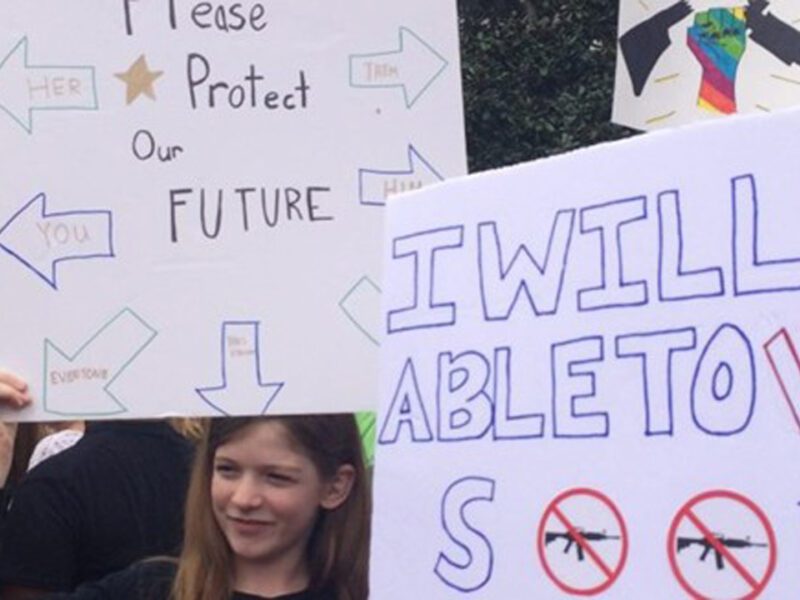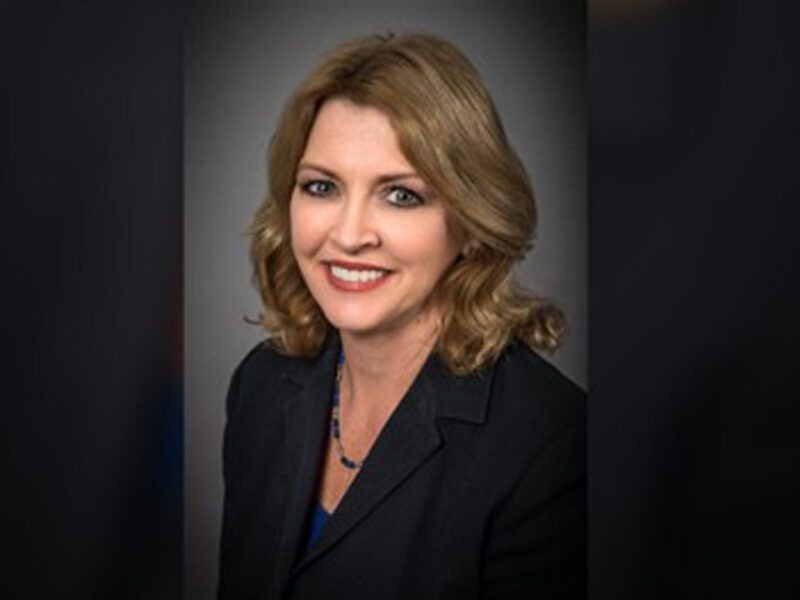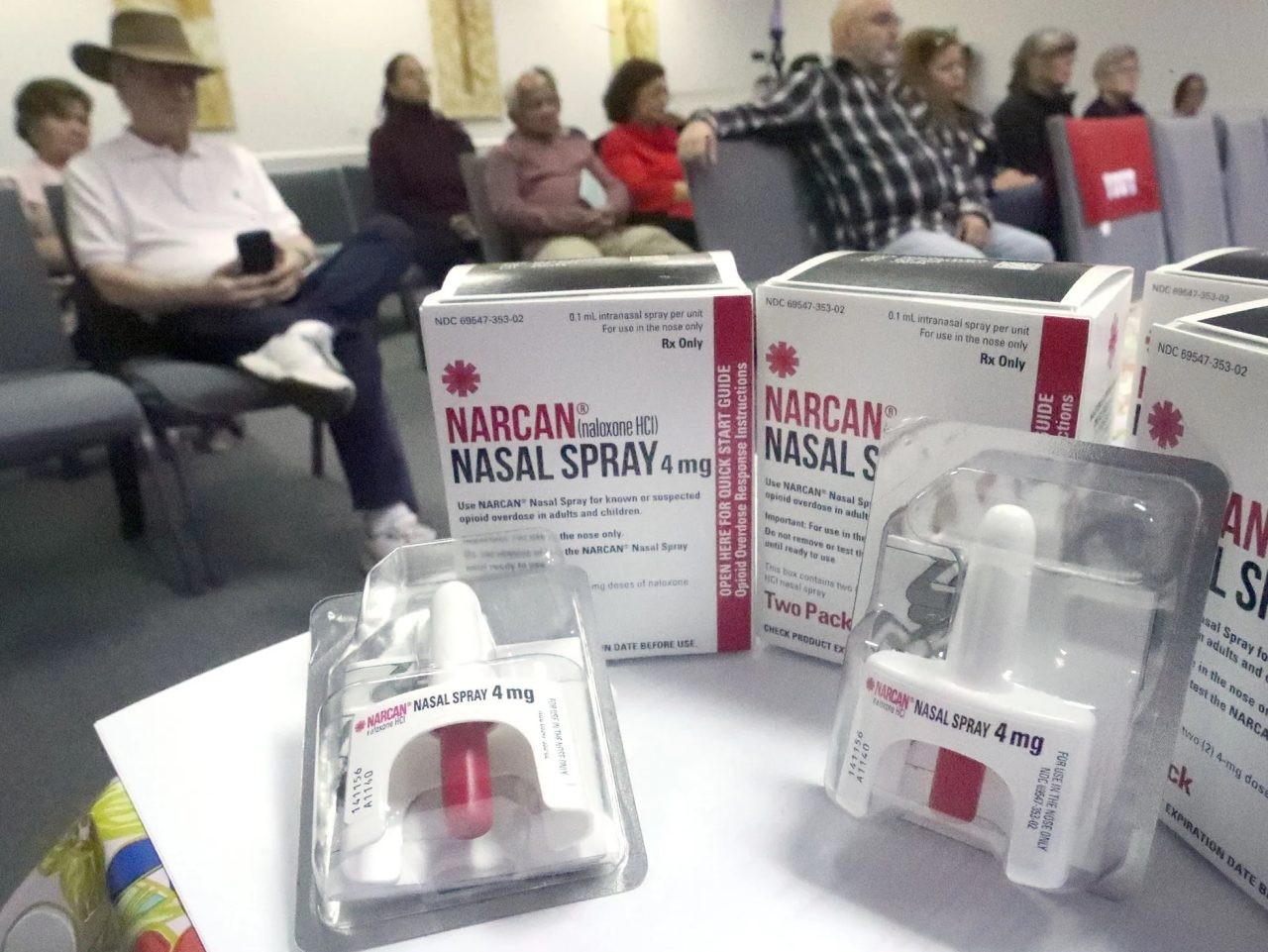
‘We hope it never, ever gets used’: Florida school district, advocates prepare for Narcan
The Daytona Beach News-Journal | By Danielle Johnson | February 23, 2023
Key Points
- The Flagler County School Board will soon consider a policy change that allows the district to stock naloxone, an opioid antagonist that reverses drug overdoses.
- Advocates say accidental drug overdoses and deaths, especially from fentanyl, continue to surge in communities in Florida and across the country.
- Narcan proponents support the medication as an inexpensive and effective way to be prepared for an overdose on school grounds.
In 2022, the Flagler County Sheriff’s Office responded to seven overdose calls involving people 18 and under, none of which were on school campuses. But as the drug overdose epidemic continues to worsen — driven by opioids like fentanyl — Flagler schools may soon be prepared in case one should happen.
The Flagler County School Board will soon consider a policy change that will allow the district to stock naloxone, a medication that reverses the effects of opioids, in schools for trained individuals to administer in the event of an overdose.
“Whenever there’s an opportunity to maintain something within your facilities that could possibly save a life, and it’s not necessarily just the student — could be an employee — and it’s inexpensive, why not?” Board Chair Cheryl Massaro said in a recent phone interview.
Massaro noted that the board members are on the same page, all viewing naloxone as another tool in the toolbox to ensure nothing tragic happens, much like the presence of defibrillators for cardiac arrests.
Use of naloxone, commonly sold under the brand name Narcan, has grown in recent years, according to Florida Department of Health statistics, and has become not only accepted but encouraged. Advocates say it is something that should be in every home, car and purse.
Massaro said that the board is not promoting illegal drug use by considering the nasal spray Narcan, but it also isn’t foolish enough to think it’s not happening in the community.
“Could (there be) the possibility of (an overdose) happening in a school? Absolutely,” she said.
Florida school districts are starting to adopt or consider Narcan policies
Many school districts already have law enforcement officials, known as school resource officers, who carry naloxone, but SB 544, which was finalized in April 2022 and became effective in July, allowed for school districts to purchase or receive naloxone. It also protects school district employees from any civil liability for administering such opioid antagonists.
Flagler Schools is one of the early districts to consider this precautionary measure as deadly drugs like fentanyl continue to trickle down to younger age groups, who may be prone to overdoses by accident or experimentation.
While a central body does not oversee school districts’ adoption of naloxone policies, the Leon County School District is a forerunner, as supplies were provided to each school after training last summer.
“Whenever there’s an opportunity to maintain something within your facilities that could possibly save a life, and it’s not necessarily just the student – could be an employee – and it’s inexpensive, why not?”
CHERYL MASSARO, FLAGLER COUNTY SCHOOL BOARD CHAIR
According to the district’s health department, Narcan is provided by the nonprofit Florida Harm Reduction Collective, and staff are trained using an online video from the manufacturer. The district’s safety and security office, superintendent and risk management attorney agreed having Narcan available was “a good, proactive measure with no downside implications.”
The department was not aware of any instances where Narcan has been used so far.
LSF Health Systems, a behavioral health managing entity that serves Central and Northeast Florida, has also trained 23 school nurses in Clay County and has a training scheduled in March for Citrus County school nurses, according to CEO Christine Cauffield.
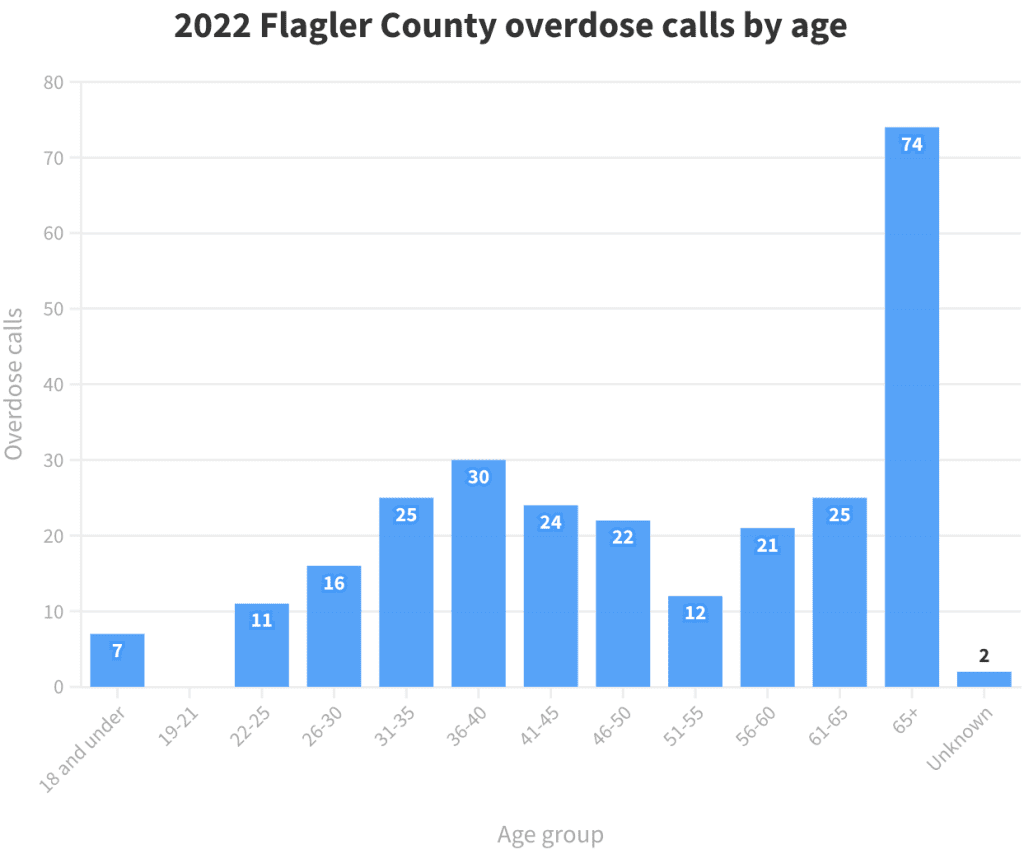
A spokesperson for the Citrus County School District confirmed they were in the planning phases and had a policy written but not yet approved. Clay County District Schools also confirmed its school board attorney was reviewing a proposed policy.
The Community Coalition Alliance, a group of coalitions working to make communities “safer, healthier and drug-free,” also provided responses from its Central and Northeast Florida coalitions, which indicated that Hernando County Community Anti Drug Coalition has discussed the idea with its school district. Marion County Children’s Alliance is considering working with its district to provide Narcan kits as a longer-range project. One Voice for Volusia expressed possibly supporting the idea in the future, too.
PACT Prevention Coalition of St. John’s County noted it has delivered Narcan to two youth detention centers, and the Hernando group had also distributed Narcan to a teen residential treatment center.
Massaro said this is “certainly the direction that most school districts are starting to move in.”
If approved, Flagler Schools must still develop guidelines on how and where Narcan will be stored, among other details such as who, if anyone, other than school nurses will be trained. The board has expressed an interest in securing Narcan in multiple locations on campus so it will be more accessible.
The board’s draft policy currently states that the Flagler County Department of Health will train school nurses, and other staff are encouraged to be trained. Nurses will be responsible for obtaining Narcan and maintaining inventory. The district is not required to notify parents prior to administering Narcan but they will be notified immediately after.
Massaro didn’t have an exact timeline, but expects employees could be trained over the summer and Narcan be available at the start of the next school year at the earliest.

Flagler County Drug Court Foundation and Open Arms Recovery Services offer free Narcan
The Flagler County Drug Court Foundation, a nonprofit run by volunteers, has offered to supply Narcan to the school district for free through a grant it has with the Department of Children and Families. Nonprofit Flagler Open Arms Recovery Services has also offered Narcan through the grant.
Otherwise, it can cost between $130-$140 or more for a two-pack without insurance, Flagler Schools officials have previously stated. With the grant, Narcan is available free through a third-party prescription, where a separate organization from the person using the medication pays for it.
“The goal of disturbing Narcan, period, whether it’s the school system or someplace else, is to assume that whether you’re involved with anybody in substance abuse or not, there’s going to be an opportunity possibly for you to help somebody stay alive,” Michael Feldbauer, FCDCF president, said.
He’s heard plenty of stories about fentanyl and opioids lately, whether a baby who accidentally ingested a pill, an elderly person with the wrong dosage in their fentanyl patch or a middle-schooler who thought it was candy.
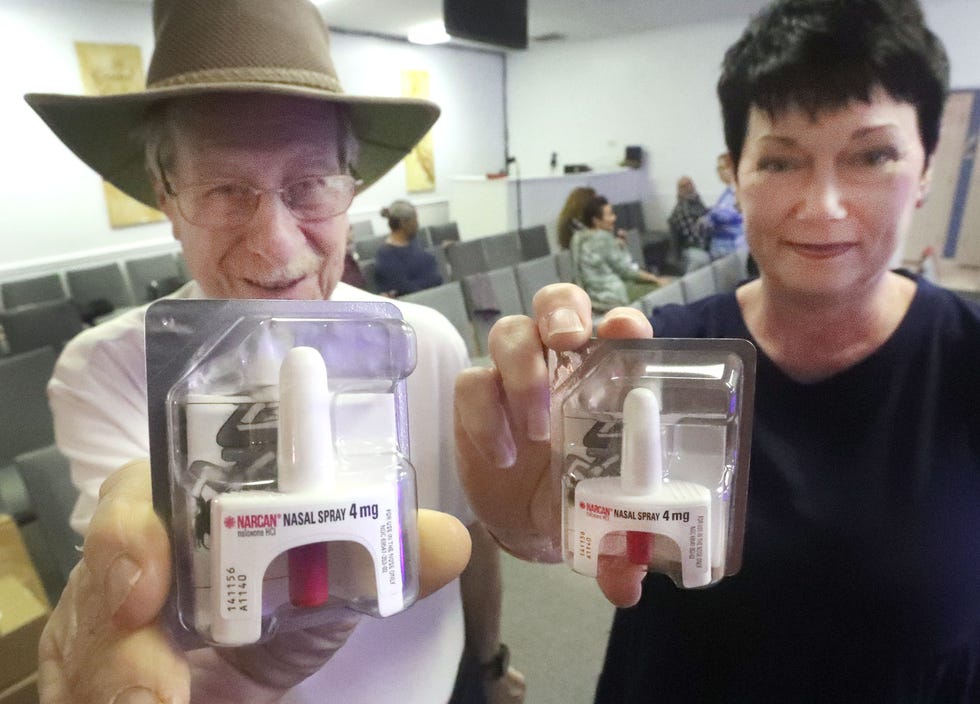
“Those are the stories that we hear,” he said. “Those stories we hope we never actually have happen in our own community, but we can’t ignore that it can.”
Feldbauer says Narcan is easy to administer as a nasal spray and has a long shelf life, but it is most effective when administered within the first few minutes of a person going down and may take multiple doses.
Narcan works by blocking opiate receptors in the brain and restoring a person’s breathing. It buys time until emergency services arrives on scene and is safe to use even if the person is not overdosing from opioids.
Feldbauer says the drug court foundation can supply as much as the school district needs. While the grant ends in October 2024, he expects DCF will continue the program.
According to Laura Walthall, deputy communications director for DCF, the department’s Overdose Prevention Program began in September 2016, and nearly 400 community organizations, such as FCDCF, have enrolled.
More than 432,000 naloxone kits have been distributed in that time with over 26,000 reports of lives saved. She said the goal is to distribute 220,000 kits per year into the community.
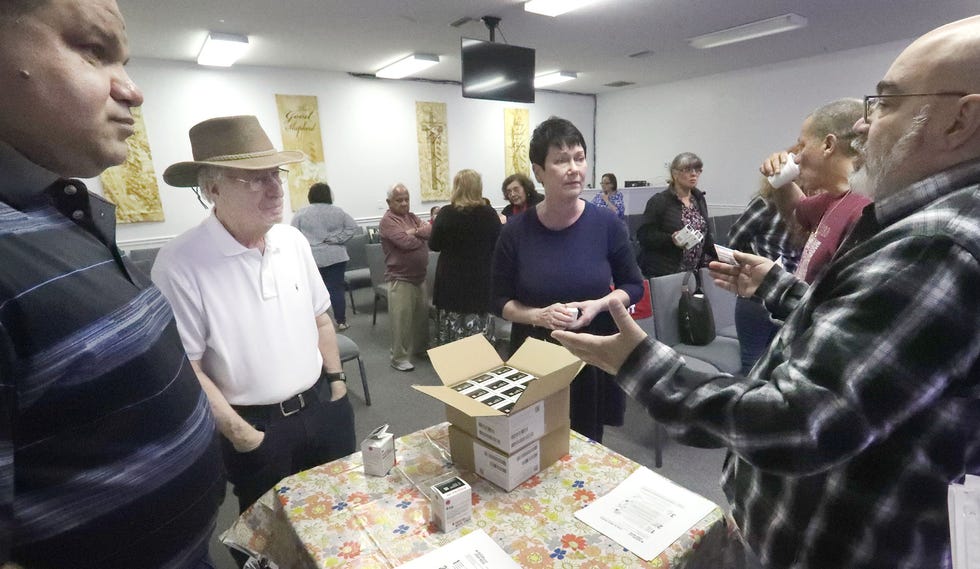
Fentanyl, other drug overdoses and deaths on the rise
Commander Michael Lutz of the Flagler County Sheriff’s Office says younger age groups do not currently seem to have a significant overdose problem.
“However, parents need to educate their children on the dangers of illegal substances because what illegal drug they may want to try, even marijuana, could be laced with fentanyl or some other illegal narcotic,” he stated in an email.
Those who work in the field confirm growing trends in fentanyl and opioid availability and use.
“Younger people are getting this stuff not intentionally, not because they’re substance abusers, but it could be just something experimentally,” Feldbauer said. “There’s so many pills out there now that look legitimate that they’ll try that and if it’s got fentanyl in it, it could kill them on the spot.” https://www.usatodaynetworkservice.com/tangstatic/html/ndnj/sf-q1a2z37a5af424.min.html
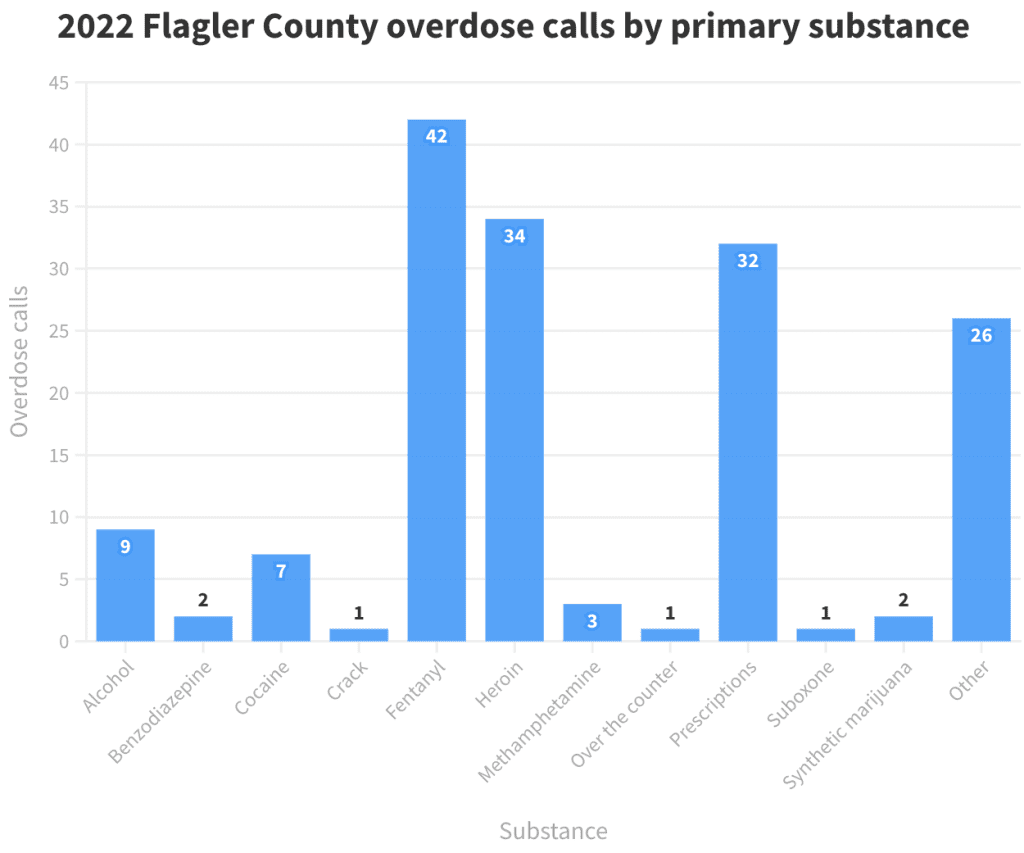
Pam Birtolo, president of OARS, has seen an increasing trend in “polydrugs.”
“In other words, people aren’t overdosing on a single drug,” she said. “Maybe somebody thought they were doing meth and it was laced with fentanyl, so they overdose on fentanyl. Most drugs that come through Flagler now are laced with fentanyl.”
According to data from FCSO, Flagler County had 23 overdose deaths in 2021 and 27 in 2022.
The majority of known substance overdose calls in 2022 were for fentanyl, at 42, followed by 34 for heroin, another opioid, which is a classification of drugs that provide pain relief, among other effects.
“Sheriff (Rick) Staly believes a holistic approach is needed — education, enforcement, addiction treatment and controlling the borders to stem the flow of illegal narcotics flowing into the United States,” Lutz wrote.
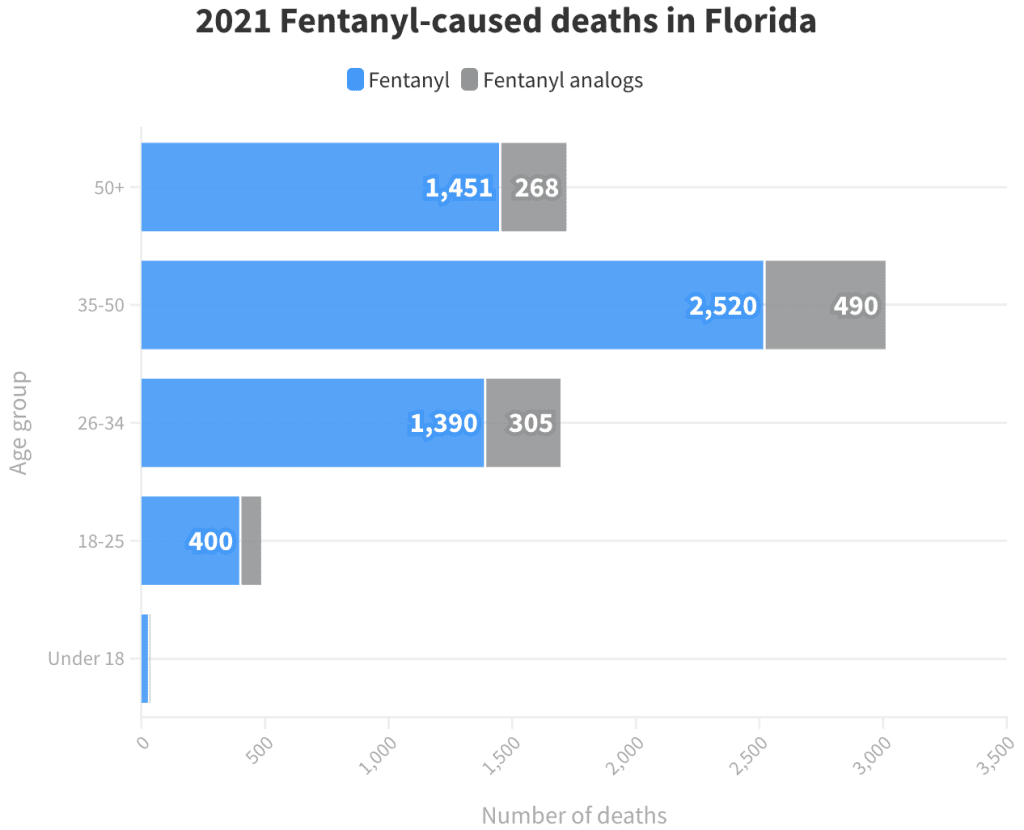
Staly issued Narcan to all deputies starting in 2018, and Lutz says it has been effective in saving lives. Narcan deployments in Flagler County more than doubled from 117 in 2021 to 269 in 2022.
While there were only seven overdose calls last year for people 18 and under, and no calls for ages 19-21, other age groups had many, including 74 calls for people 65 and up.
According to the 2021 Florida Medical Examiners Commission drug report, there were 5,791 fentanyl-caused deaths in the state that year, including 30 people under 18 and 400 ages 18-25. Fentanyl was the leading opioid cause of death, followed by 1,152 from fentanyl analogs (alterations of fentanyl), 504 from oxycodone, 493 from morphine and 371 from heroin.
The fentanyl deaths in 2021 had increased from 3,244 in 2019 and 5,302 in 2020.
Drug epidemic is hitting everyday American families
Advocates say the age distribution of opioid overdoses and deaths highlights the need to reduce the stigma around Narcan use.
Feldbauer says when it comes to saving the lives of substance users, too often people question why bother.
“We believe number one, if they’re involved in substance abuse, they’re addicted, that if they’re dead, they’ll never recover,” he said. “And what about the person who took something by mistake?”
Reneé DeAngelis, Narcan administrator for the drug court foundation, lost her daughter, Savannah, to a fentanyl overdose in 2017 when she was 23.
She had become addicted to opioids following surgeries — and the dealer who supplied the drugs is now serving a 30-year sentence for second-degree murder.
“Not only is this an addiction problem at this point, but it is a poisoning problem for a lot of young people who are of high school or even middle school age,” DeAngelis said. “There might not be any incidents at this point in our school district where someone has overdosed and so forth … but when it does happen, are you going to be ready for it?”
DeAngelis believes if she had been more educated and had Narcan in her home, her daughter would still be alive.
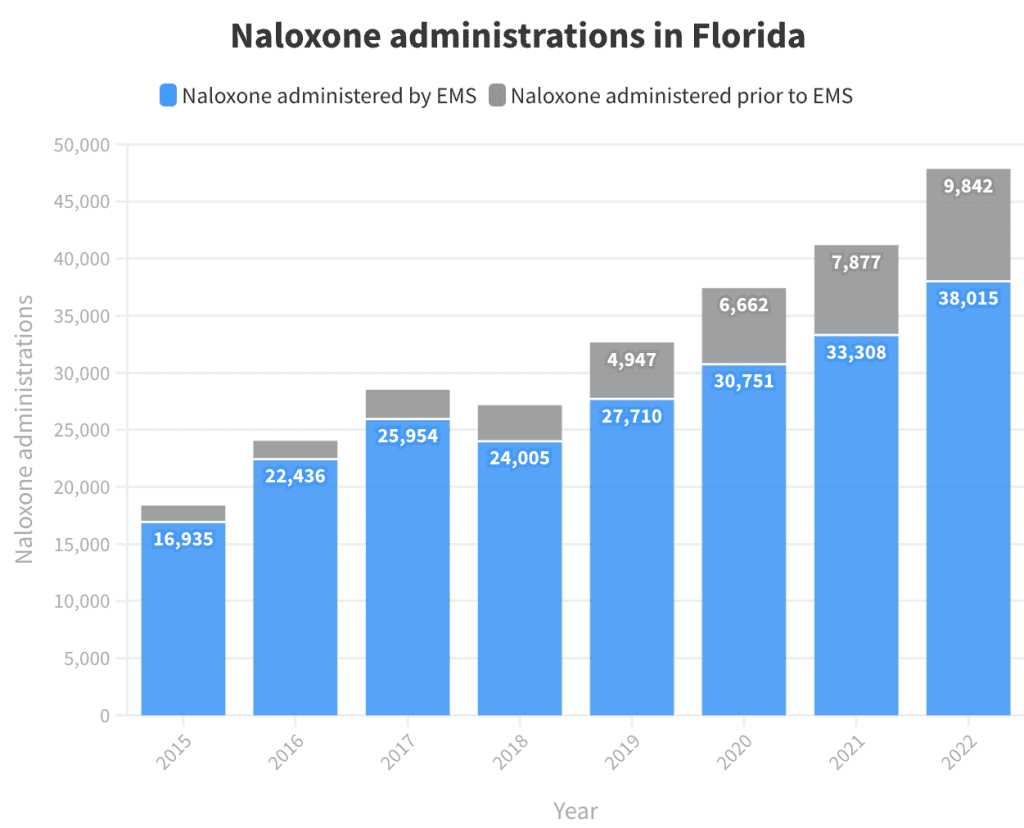
In other scenarios, children may take pills by accident or as part of “normal teenage experimentation.” The drug epidemic is hitting everyday average American families who are not expecting it, and children are paying for it with their lives, DeAngelis said.
The drug court foundation and OARS both distribute Narcan to community members and have trained multiple entities, such as churches and businesses, on how to use it.
“If I can help families not to go through this destruction that we went through, this devastation, that’s what I need to do,” DeAngelis said.
She estimates the drug court foundation has handed out close to 2,000 units of Narcan in the past two years in Flagler County. She is aware of 16 lives that have been saved by overdose reversals, but believes there are many more that go unreported.
“This is taking a whole new turn with the fentanyl thing, and we’ve got to be ready for it when it strikes us,” she said. “It will. It’s in every town and every city in the United States. There’s nobody who’s exempt from it.”
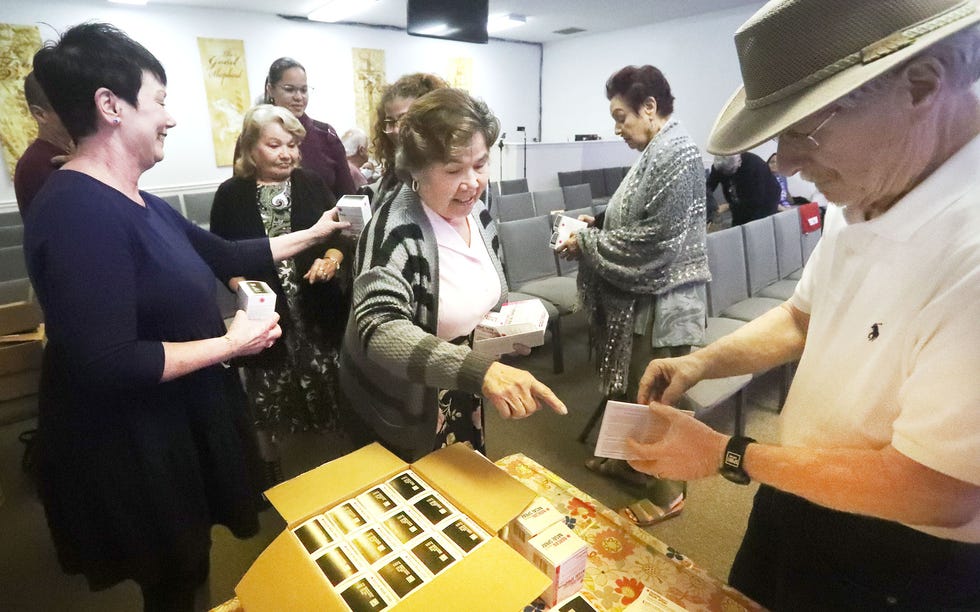
Kicking the stigma around opioid overdoses and Narcan use
Kim Schattner, vice president of FCDCF, is one life that has been saved by Narcan.
Her addiction started in college, before naloxone was widespread, when someone gave her a pill they said would curb her appetite, keep her thin and give her energy. She blacked out in the bathroom and was taken to the hospital. She continued to struggle with substance use disorder in the following years and has been administered Narcan.
She doesn’t remember the experience besides being shocked back to life and waking up in the hospital.
“What I would like to see is people not being treated like garbage because of a drug overdose,” she said. “Legitimately that’s what I felt like the case was with my overdose.”
Schattner says drug use affects entire families and the community, so she wants others to know they are not alone. She is now in long-term recovery.
“An addict is someone’s daughter, son, father, mother, brother and sister, and in the grand scheme of things, they’re still a human being with a sickness,” she said. “I think any life that can be saved is worth saving and no one needs to die from this disease.”
But drug overdoses don’t only happen to those with substance use disorders. Schattner’s 78-year-old mother has also been administered Narcan after forgetting she had taken her medication.
“This is taking a whole new turn with the fentanyl thing, and we’ve got to be ready for it when it strikes us. It will. It’s in every town and every city in the United States.There’s nobody who’s exempt from it.”
RENEÉ DEANGELIS, FLAGLER COUNTY DRUG COURT FOUNDATION NARCAN ADMINISTRATORS
Birtolo said most of the people OARS gives Narcan to are older and take prescription opioids, but it is also for “kids who are being kids” who may be experimenting with a deadly drug.
“My goal is to get Narcan into every home, every filling station, every restaurant, every venue, any place where people gather, every car,” she said. “I don’t think that you should leave home without Narcan in your vehicle.”
Both Birtolo and Schattner compared Narcan to a seat belt intended to reduce harm. They said it is a misconception that the availability of Narcan increases drug use.
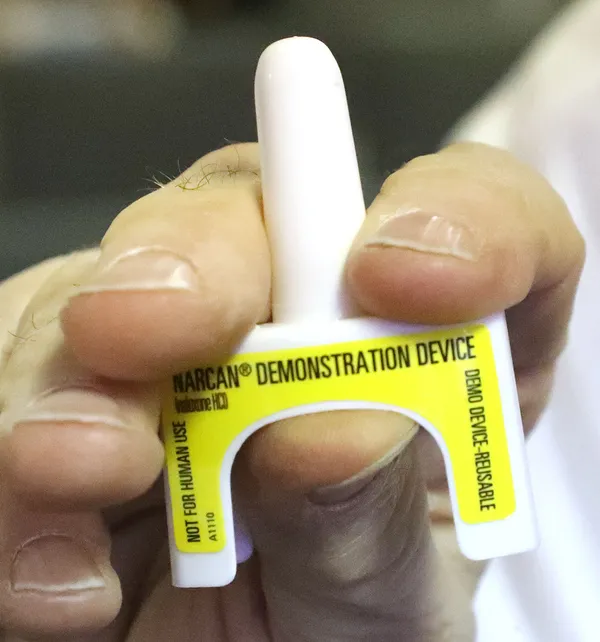
“I think that we put on seat belts in a car not hoping that we’ll ever really truly need it,” Schattner said. “It’s the same thing like that or car insurance. I don’t know about you, but I have Band-Aids under my sink just in case, and that’s what I feel like Narcan can be. I would rather be safe than sorry.”
Massaro, who has a master’s degree in health education, carries Narcan in case of an emergency and supports keeping it in schools.
“When there’s a preventative action out there that’s inexpensive, I’m all gung-ho. Let’s do it,” she said. “There haven’t been (overdoses in schools), and we don’t want it. We hope it never, ever gets used.”
The Flagler School Board approved advertising the naloxone policy change to the public at its meeting Wednesday. It must be advertised for 30 days so the public can provide comments and feedback. After that, it can be reviewed again and considered for approval. The next meeting is March 28 at 6 p.m.



